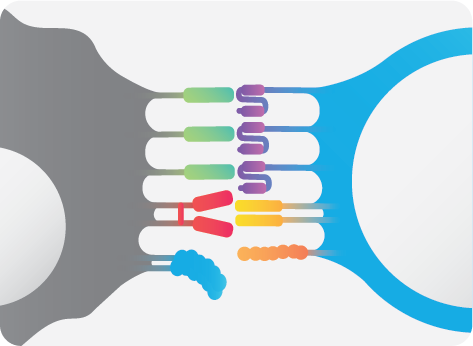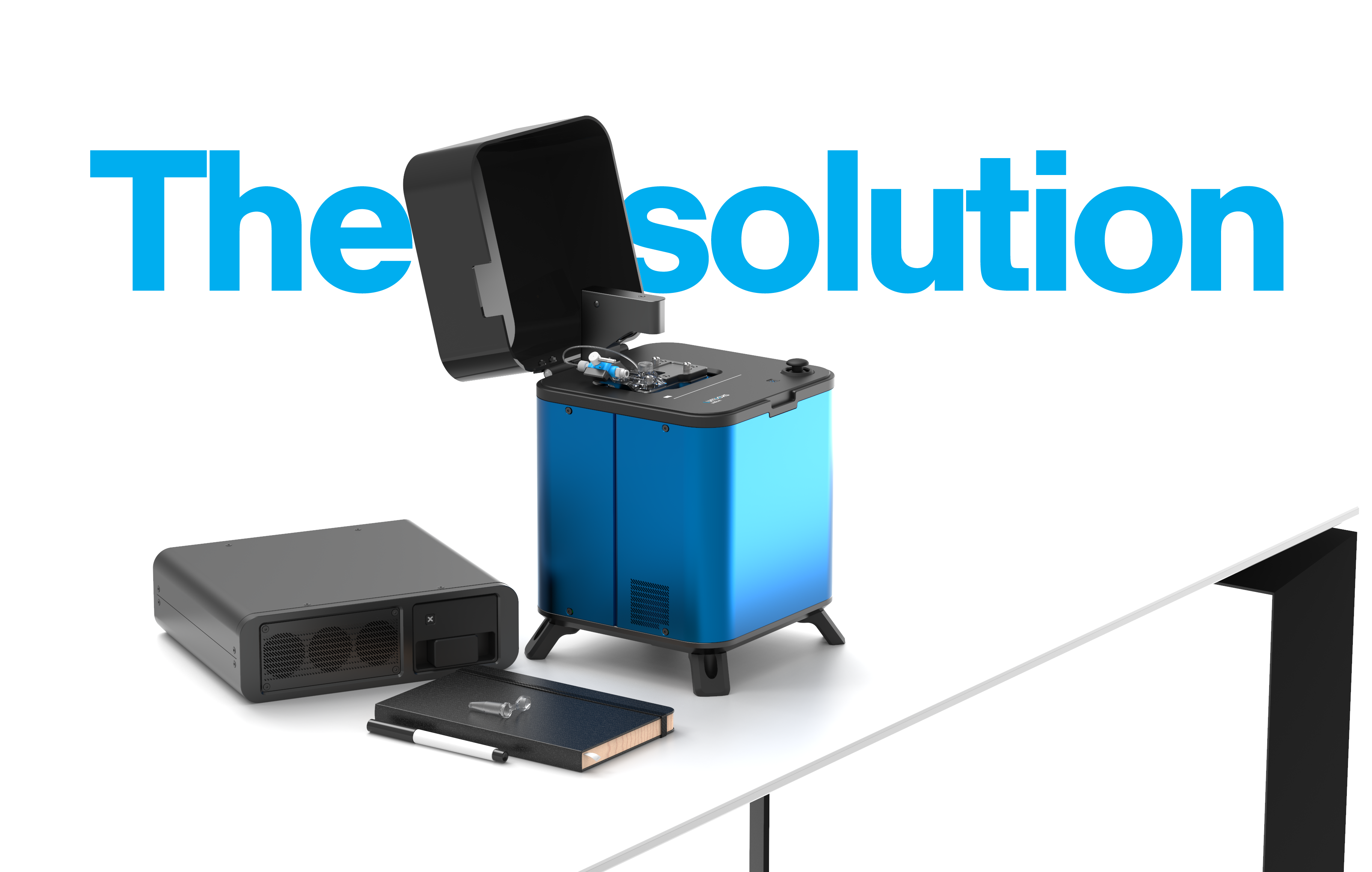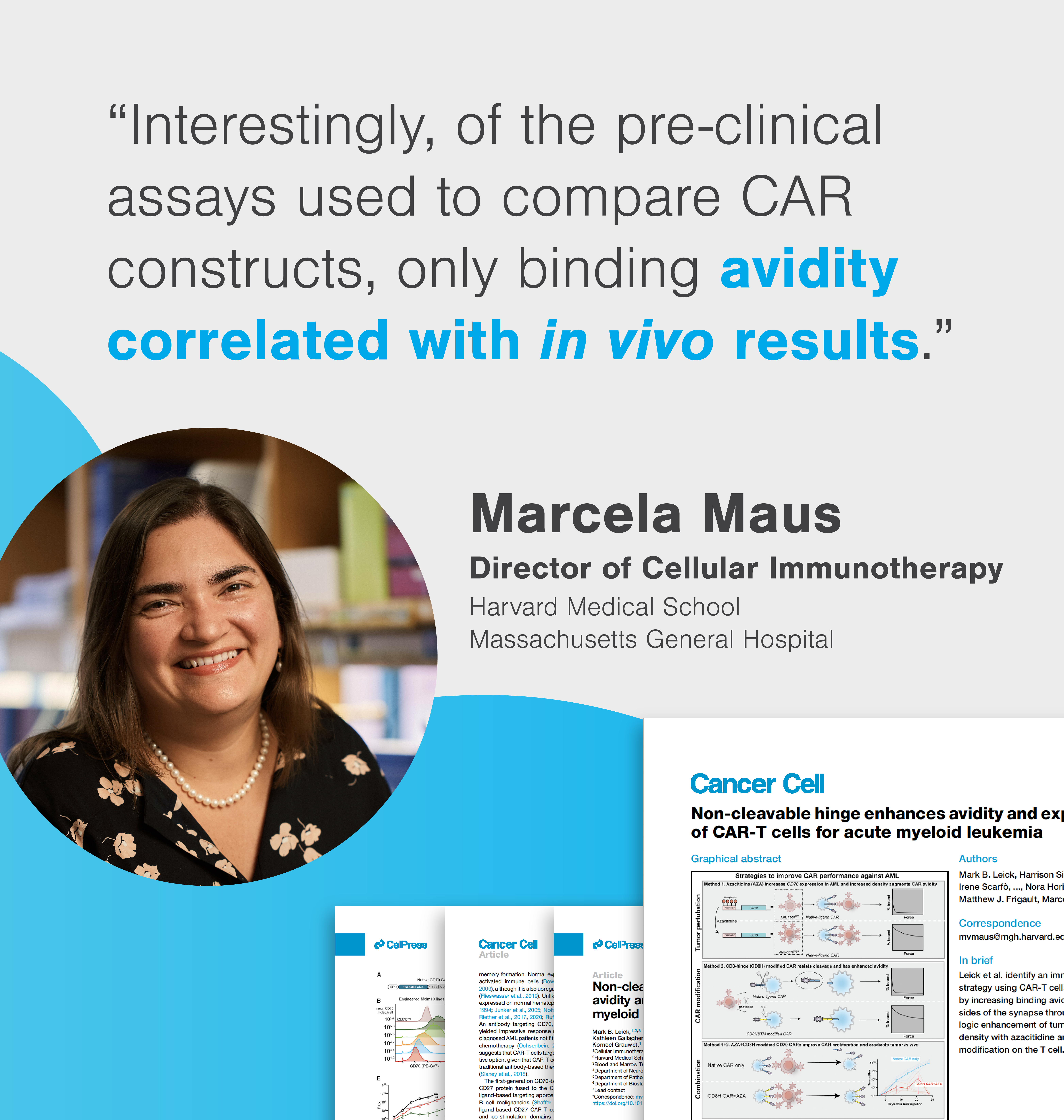
Cell Avidity: the missing biomarker in immuno-oncology
Binding events between an immune cell and its target tumor cell determine the initiation of immunological synapse formation. This in turn sets a series of important events in motion, such as activation, expansion, tumor cell elimination and persistence. These events are all a function of the signals provided upon that initial binding event. Cell–cell interactions are, therefore, crucial parameters to consider when trying to comprehend mechanism underlying immune cell responses.
Cell avidity defines the total intercellular force between multiple parallel interactions, including co-receptor binding, TCR clustering, cell adhesion proteins, and even orientations and valencies. It provides a more complete and physiologically relevant picture that reflects the bona fide interaction between effector cells and tumor cells, and serve to better predict cellular responses and outcomes during immunotherapy development.
Check out how to analyse cell avidity in motion
Why cell avidity? Filling the scientific gap
Researchers still face challenges to identify and validate effective cell-based therapies. Our understanding of the processes underlying patient’s response and toxicities is still incomplete. The conventional approaches to select the best immunotherapeutic effector cells include cytokine secretion and cytotoxicity assays. While these assays can produce valuable data on a molecular level, they fall short in providing understanding of cellular interaction.
On the other hand, cell avidity analysis encompasses all synaptic interactions between the immune cell and target cell and is therefore more predictive of immune cell function. The work conducted by the Marcela Maus lab showcased that conventional assays couldn’t differentiate between the different CAR constructs, while measuring avidity enables the team to pick the top CAR candidates with the best in vivo response (Larson et al. 2022, Nature, Leick et al. 2022, Cancer Cell).
Learn how incorporating cell avidity measurement improves R&D efficiency by selecting the best preclinical candidate.
Our solution
The z-Movi® Cell Avidity Analyzer is a solution for researchers to determine cell avidity, which has been notoriously difficult to measure until now. Through avidity measurements, the z-Movi can help researchers investigate cell interaction properties that correspond to immune cell response in a predictive, reproducible, and fast manner. All this at a high-throughput and single-cell level, without compromising cell viability.
Being able to measure these interactions provides researchers valuable information and enables them to select best candidates at an early stage. This informed selection from the start can improve their success rate dramatically.
Curious to learn more?





